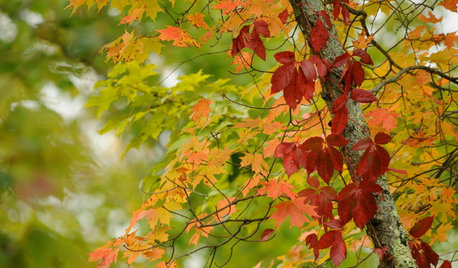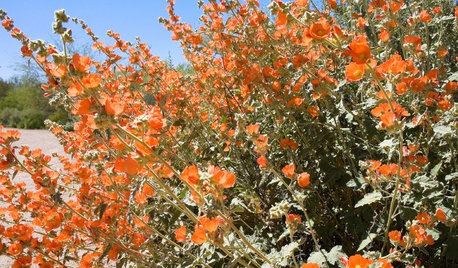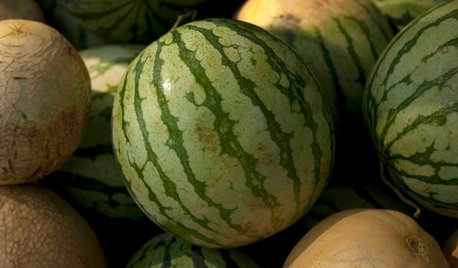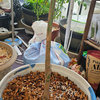Orange blossoms fall before oranges can grow
jwalker720
13 years ago
Featured Answer
Sort by:Oldest
Comments (48)
Grady Stanley
13 years agofruitnut Z7 4500ft SW TX
13 years agoRelated Discussions
how old is an orange tree before it has blossoms
Comments (6)With a seedling tree, a tree grown from seed, you never know what you will get. If you want fruit, buy a grafted tree from a reputable nursery. Then you will get fruit of known characteristics. Your seedling is one of a kind, just like all of us are. The Fruitnut...See MoreWhats the best smelling orange blossom?
Comments (8)Hey, Austin. I see Garden_Dragon has responded without providing an opinion. Are you going to admonish Garden_Dragon for not expressing an opinion? Austin, my opinion is to consult your co-op agent who can give you the "best option" for your area, which is what you asked. You state you are in zone 9. Is that north nearer to Cedar Key and Jacksonville or south nearer the 'Glades? The sweetest tasting or sweetest smelling citrus may not grow in Zone 9. What grows in Indian River county may not grow in Gainesville. I was providing an answer based on information (or lack of) provided by you. 35 years ago there were citrus groves along I-75 in the Gainesville area. Those are gone now, partly due to a few harsh winters. So your answer is like the old saying about real estate : location, location, location. I hope you find a variety which meets your approval....See Morechoisya ternata mexican orange blossom
Comments (1)I don't know the plant 'Mexican Orange Blossom', but here are some fragrant plants that do well for me here near Atlanta: Gardenia August Beauty (but it blooms in June/July) Tea Olive (Osmanthus fragrans) -wintertime Lavender - summer Carolina Jessamine - a climbing vine - spring Roses - I love 'Fragrant Cloud' - spring-fall Plumeria - as an indoor/outdoor plant - not frost hardy summer Camellia try 'Fragrant Pink', 'High Fragrance', or 'Cinnamon Cindy' for wintertime scent Buddleia - and they attract Butterflies (aka Butterfly Bush) - summer Magnolia - spring (deciduous varieties) summer (evergreen varieties) Calycanthus - Carolina Sweet Shrub - spring blossoms, leaves are fragrant when crushed all summer Leatherleaf Mahonia - winter-spring - just watch out for the spikey leaves when sniffing Bruce...See MorePinkeye purple hulls orange blossoms?
Comments (6)So, continuing to be an interesting pea/bean. The peas grow in clusters of 2-4 on the end of 18" sticks which stick up from the top of an attractive, 2 foot bush. Hulls are green with older hulls taking a slight tinge of purple on the edge. The peas, when planted were cream colored with a pink eye. Very similar to the PEPH that I've planted for the past couple of years. The green, partially filled pod is very tender and sweet when raw. Reminds me of an Asian long bean, maybe tastier. Haven't cooked it yet be we will be having for dinner tonight. All the plants are similar in this row. I have 3 other rows, planted later, that should be flowering this week. These came from a NW TX market groweroff another forum. He sent me about 1/2-1 pound labeled PEPH, about 3 years ago. This is the first time I've grown them. I had been using seed from my own PEPH which I had purchased, but decided to go with these instead this year....See Morejwalker720
13 years agoGrady Stanley
13 years agobellcanyonblonde
13 years agogardenathome
13 years agocoocoo4plants
13 years agomoshe18
13 years agogrwclark1238_att_net
13 years agosilica
13 years agocebury
13 years agoJeff82
11 years agohoosierquilt USDA 10A Sunset 23 Vista CA
11 years agoJeff82
11 years agoJeff82
11 years agoBilliecat
10 years agoorangelime1
10 years agojijih15
9 years agolast modified: 9 years agoDebbie Pratto
8 years agokarlosveloces
8 years agoBarbJP 15-16/9B CA Bay Area
8 years agolast modified: 8 years agokarlosveloces
8 years agoHU-122959428
2 years agoKen B Zone 7
2 years agoponcirusguy6b452xx
2 years agoMeyermike(Zone 6a Ma.)
2 years agolast modified: 2 years agoHU-122959428
2 years agoKen B Zone 7
2 years agoHU-122959428
2 years agoKen B Zone 7
2 years agoAlex [Lithuania z6a]
2 years agolast modified: 2 years agoKen B Zone 7
2 years agoSilica
2 years agolast modified: 2 years agoKen B Zone 7
2 years agoSilica
2 years agoHU-122959428
2 years agolast modified: 2 years agoAlex [Lithuania z6a]
2 years agoHU-122959428
2 years agoAlex [Lithuania z6a]
2 years agolast modified: 2 years agoAlex [Lithuania z6a]
2 years agolast modified: 2 years agoponcirusguy6b452xx
2 years agoHU-122959428
2 years agolast modified: 2 years agoAlex [Lithuania z6a]
2 years agolast modified: 2 years agoAlex [Lithuania z6a]
2 years agolast modified: 2 years agoHU-122959428
2 years agoSilica
2 years agoHU-122959428
2 years ago
Related Stories

FALL GARDENING5 Fall Fruits You Can Grow in Containers
Brighten your porch or patio with a potted pomegranate, kumquat, blueberry bush or another great fall fruit
Full Story
MOST POPULARFalling for Color: 9 Ways With Pumpkin Orange
From racing stripes to accent walls, see how to work this vibrant hue into your home
Full Story
BOLD COLORZest for Orange Stays Strong in Fall 2012
From pumpkin to tangerine, this hue is still hot stuff on walls, rugs, furniture and accessories
Full Story
COLORFall on the Wall: Decorating With Rich Reds, Browns and Oranges
For your interiors, take a cue from nature’s colorful seasonal offerings
Full Story
ORANGETreat Your Rooms to Pumpkin Pie Orange
Stir some pumpkin colors into your interiors for design deliciousness that lasts well beyond Thanksgiving
Full Story
GARDENING GUIDESWarm Up Your Garden With Orange Flowers
Hummingbirds and butterflies are not the only ones who will notice when you introduce a blaze of orange into your garden
Full Story
GARDENING GUIDESYes, You Can Grow an Edible Garden on a Hot, Dry Site
Difficult garden spots don’t need to deter you from planting trees, herbs and other delicious food plants
Full Story
COLOROrange for Fun — and Yes, Versatility — Around the House
It may never be the new black in anything but prison shows, but orange can dramatically increase your home's energy level
Full Story
GARDENING GUIDESSummer Crops: How to Grow Melons
Drink in the refreshing sweetness of melons from your own garden this summer — they can last well into fall too
Full Story
EDIBLE GARDENSWhy Grow Quince? For Beauty, Fragrance and Old-Time Flavor
Delightfully perfumed fruit and lovely spring blossoms make this apple and pear cousin worth a spot in the garden
Full Story



fruitnut Z7 4500ft SW TX